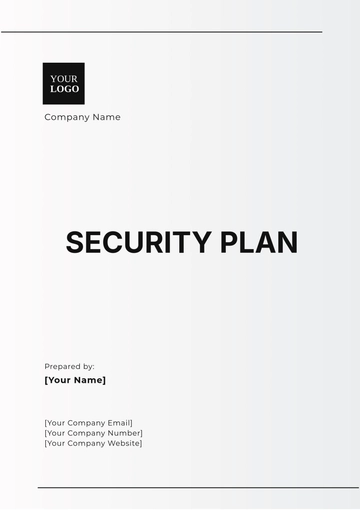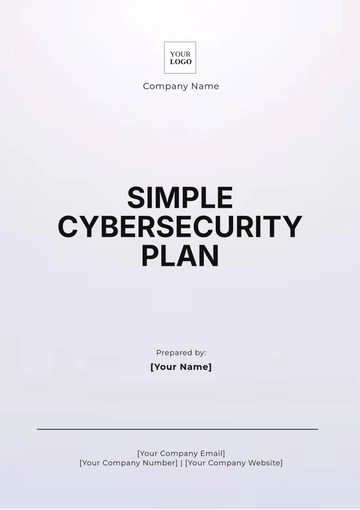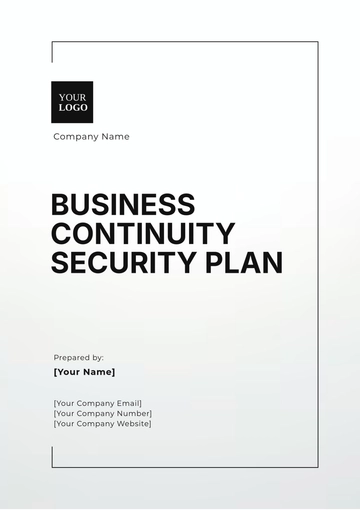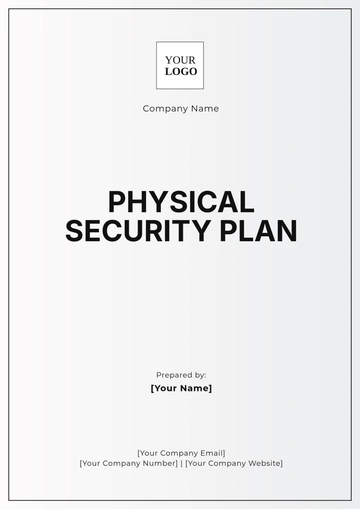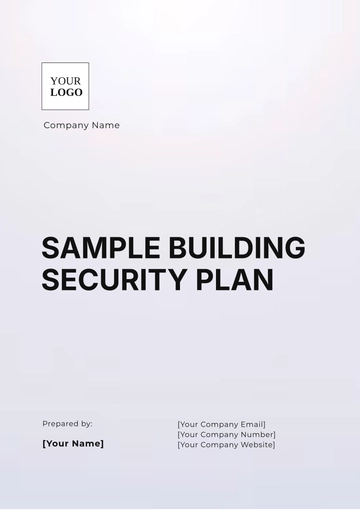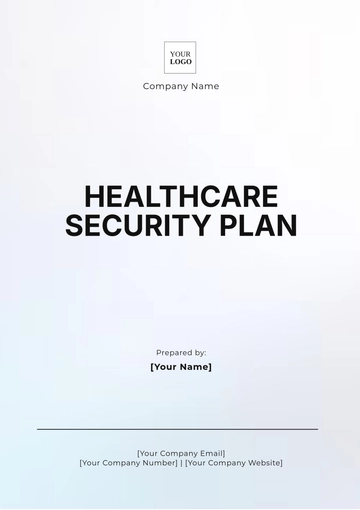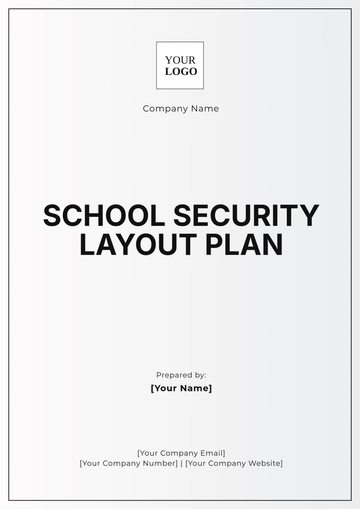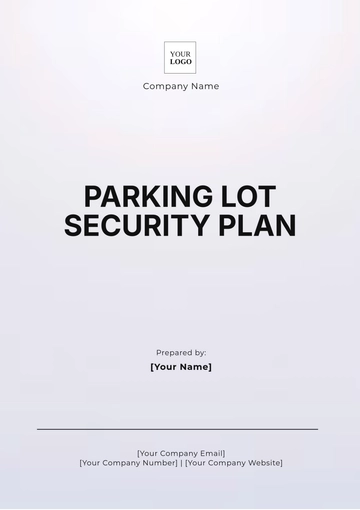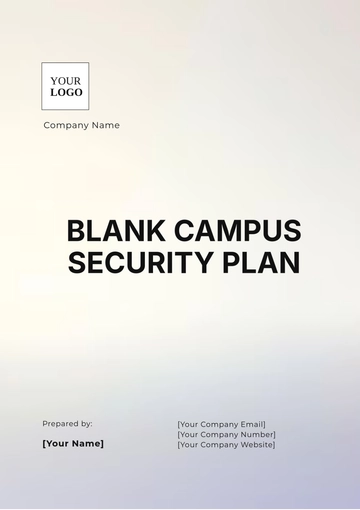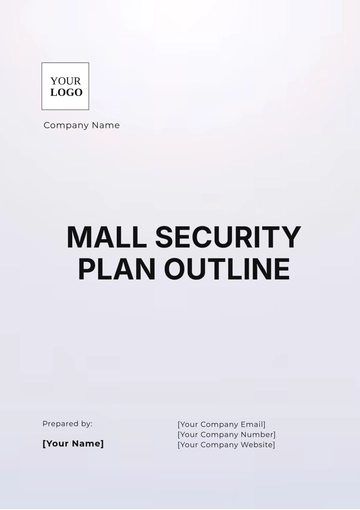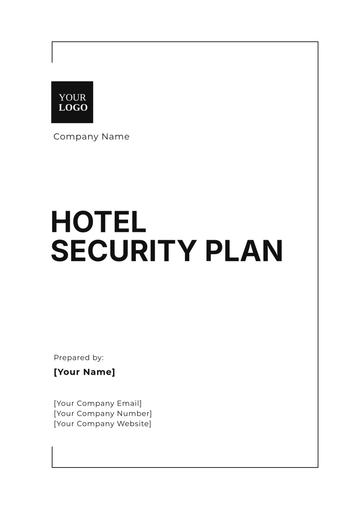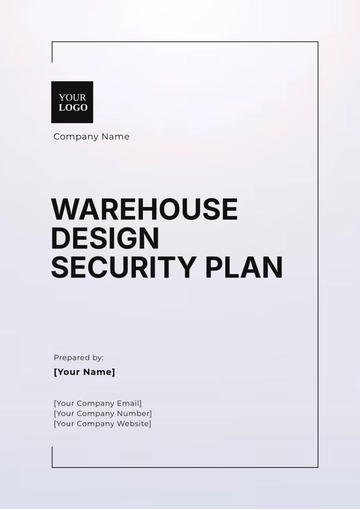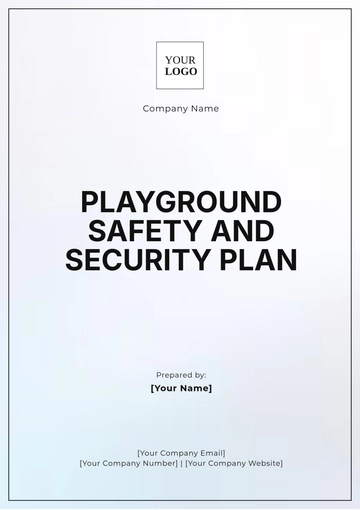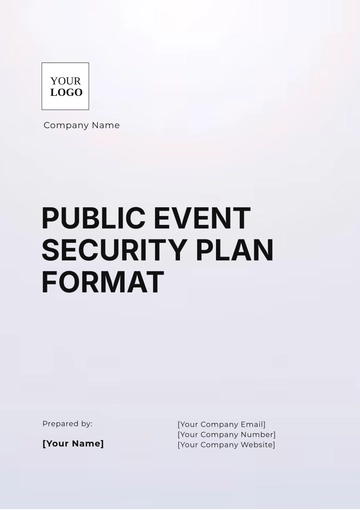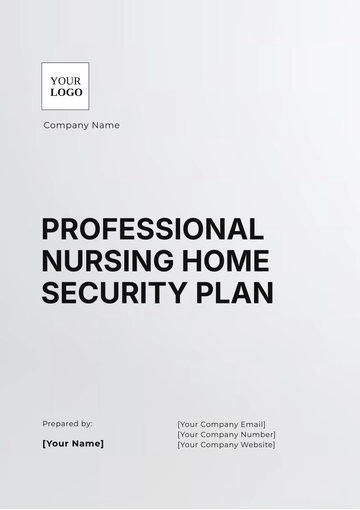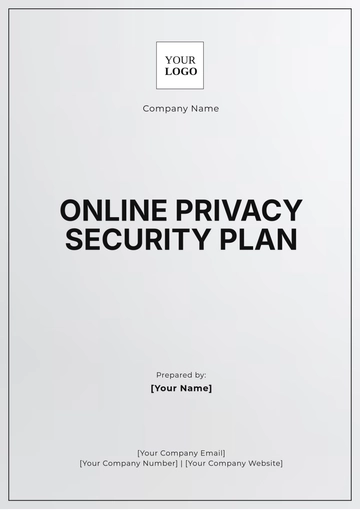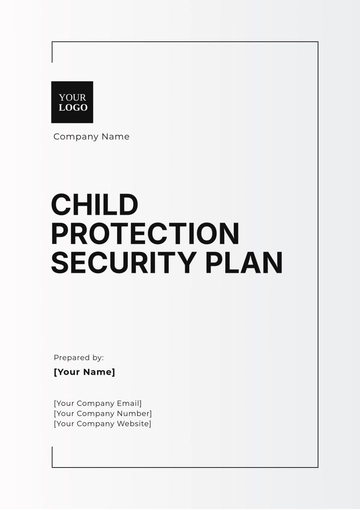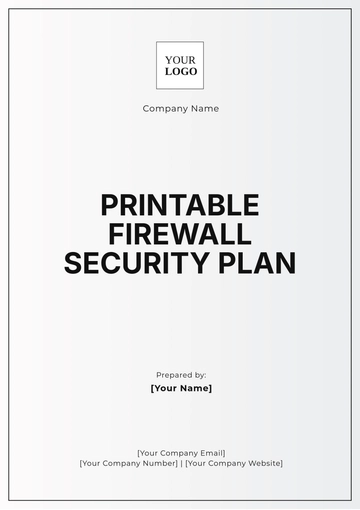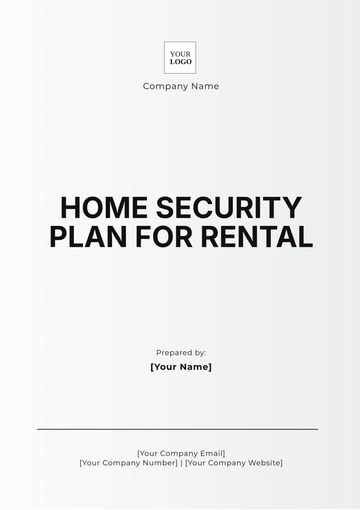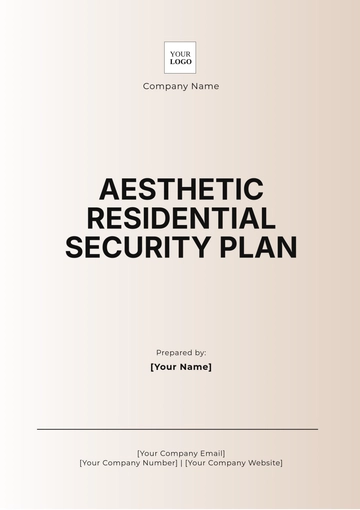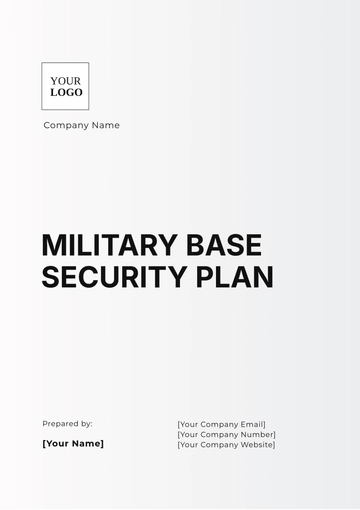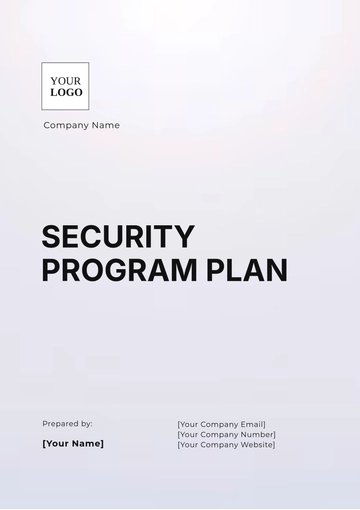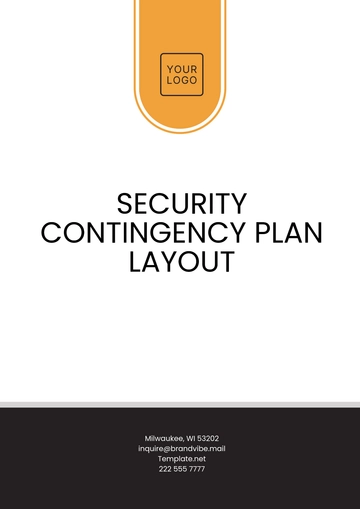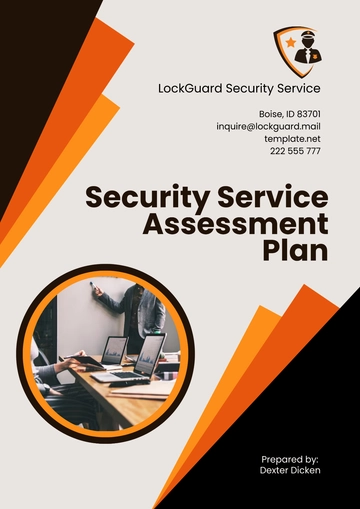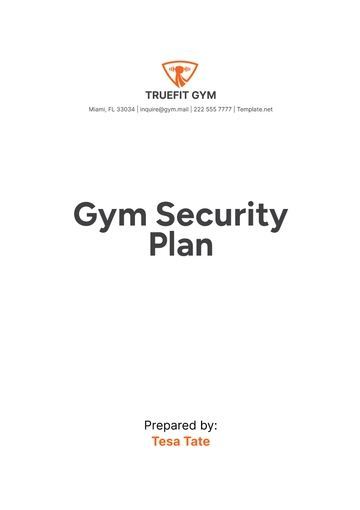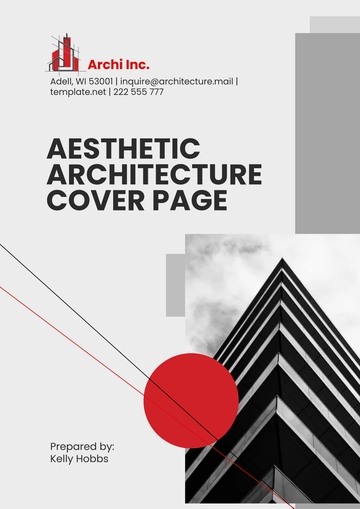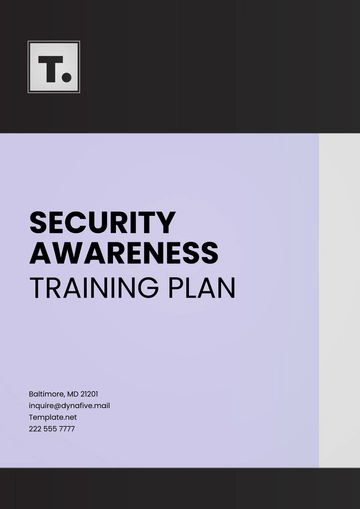Free Hotel Security Plan
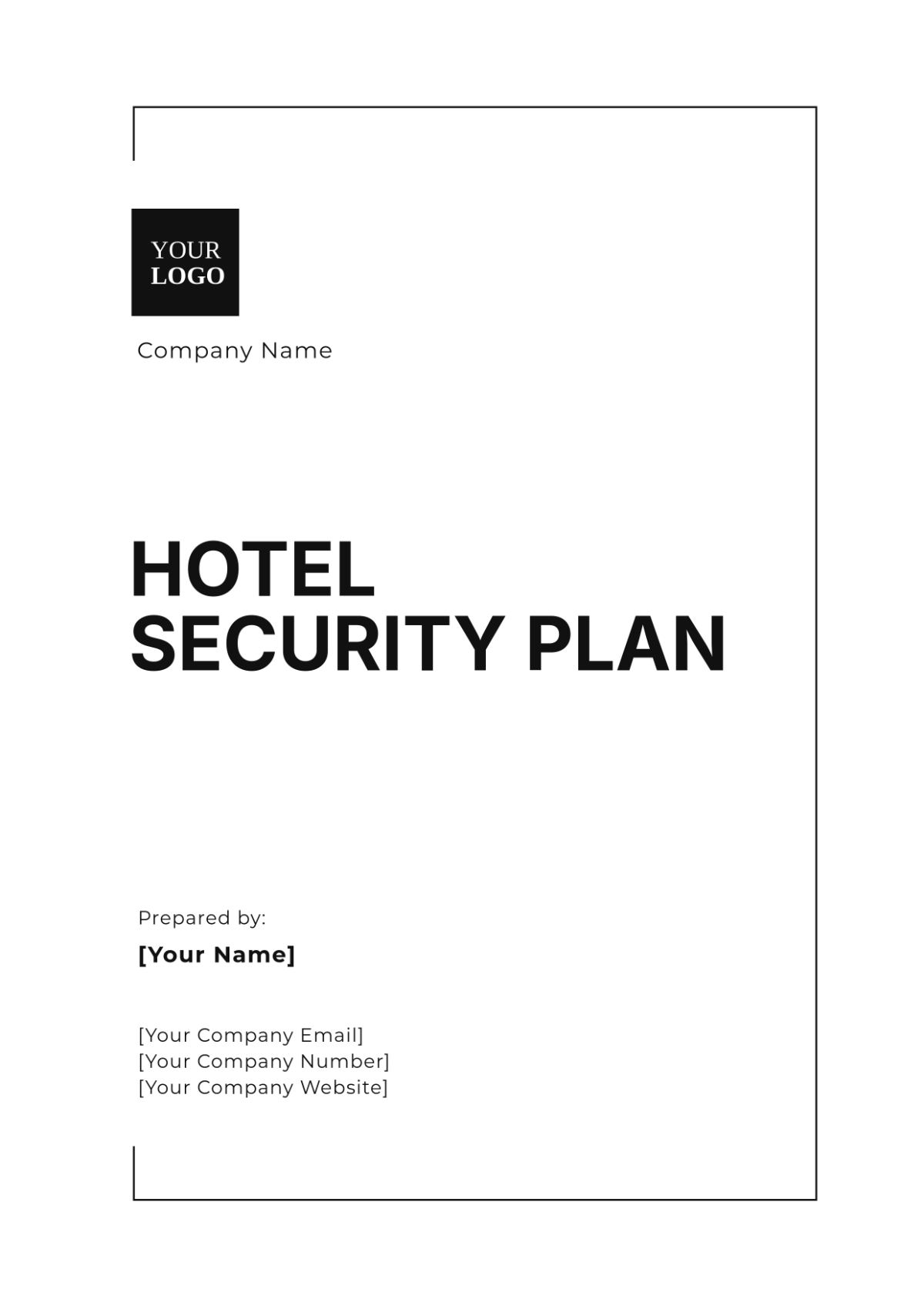
I. Introduction
A. Purpose of the Plan
The purpose of this Hotel Security Plan is to ensure a safe and secure environment for all guests, employees, and visitors at [Your Company Name]. This plan outlines the procedures, protocols, and measures implemented to prevent accidents, manage emergencies, and maintain high standards of safety and health within the hotel premises. By adhering to these guidelines, we aim to minimize risks and provide a safe haven where our guests can enjoy their stay without concerns about their personal safety and well-being.
B. Scope and Applicability
This plan applies to all employees, guests, contractors, and visitors at [Your Company Name]. It covers every aspect of hotel operations, including guest services, housekeeping, maintenance, food and beverage services, and any other activities conducted within the hotel premises. The guidelines outlined in this plan are designed to ensure compliance with local, state, and federal safety regulations and standards.
C. Objectives of the Plan
The primary objectives of the Hotel Security Plan are:
To establish a comprehensive framework for maintaining safety and security within the hotel.
To ensure that all employees are trained and equipped to handle emergency situations effectively.
To create a safe environment for guests by implementing stringent safety measures and protocols.
To promote a culture of safety and health awareness among all staff members and guests.
To comply with all relevant legal and regulatory requirements pertaining to hotel safety and health.
II. Roles and Responsibilities
A. Management Responsibilities
The management team at [Your Company Name] plays a crucial role in ensuring the effective implementation and enforcement of the Hotel Security Plan. Management is responsible for:
Developing and maintaining the safety policy and procedures.
Ensuring that all employees receive appropriate safety training.
Conducting regular safety audits and inspections.
Addressing any safety concerns or incidents promptly and effectively.
Providing the necessary resources and support to maintain a safe environment.
B. Employee Responsibilities
Employees at [Your Company Name] are expected to actively participate in maintaining a safe and secure environment. Employee responsibilities include:
Complying with all safety policies and procedures.
Attending mandatory safety training sessions.
Reporting any safety hazards or incidents to the management immediately.
Using personal protective equipment (PPE) as required.
Ensuring their work areas are clean, organized, and free of hazards.
C. Guest Responsibilities
Guests also play a part in ensuring their own safety and the safety of others. At [Your Company Name], guests are encouraged to:
Familiarize themselves with the hotel’s emergency procedures and evacuation routes.
Report any safety concerns or hazards to hotel staff.
Follow the hotel’s safety guidelines and instructions provided by the staff.
Keep their rooms and personal areas secure and free of obstructions.
III. Emergency Preparedness
A. Emergency Response Plan
[Your Company Name] has developed a comprehensive Emergency Response Plan to manage and mitigate the impact of emergencies. This plan includes detailed procedures for responding to various emergencies, such as fires, medical emergencies, natural disasters, and security threats. The Emergency Response Plan is regularly reviewed and updated to ensure its effectiveness and compliance with current standards.
B. Evacuation Procedures
In the event of an emergency requiring evacuation, [Your Company Name] has established clear and efficient evacuation procedures. These procedures are designed to ensure the safe and orderly evacuation of all guests, employees, and visitors. Key elements of the evacuation procedures include:
Evacuation Routes: Clearly marked and well-lit evacuation routes are posted throughout the hotel. Maps indicating these routes are displayed in guest rooms and common areas.
Assembly Points: Designated assembly points are identified outside the hotel where evacuees can gather and be accounted for. These points are clearly marked and easily accessible.
Evacuation Drills: Regular evacuation drills are conducted to familiarize employees and guests with the evacuation procedures. These drills help identify any potential issues and ensure that everyone knows how to respond in an emergency.
C. Emergency Contact Information
[Your Company Name] maintains a list of emergency contact numbers that are readily accessible to all employees and guests. This list includes contact information for local emergency services, hotel management, and key personnel responsible for emergency response. The emergency contact information is displayed in guest rooms, at the front desk, and in common areas.
IV. Fire Safety
A. Fire Prevention Measures
Fire safety is a top priority at [Your Company Name]. To prevent the occurrence of fires, we have implemented the following fire-prevention measures:
Fire Risk Assessments: Regular fire risk assessments are conducted to identify potential fire hazards and implement appropriate control measures.
Electrical Safety: All electrical equipment and installations are regularly inspected and maintained to prevent electrical fires.
Smoking Policies: Smoking is prohibited in all indoor areas and designated smoking areas are provided outside the hotel.
Storage of Flammable Materials: Flammable materials are stored in designated areas away from ignition sources.
B. Fire Detection Systems
[Your Company Name] is equipped with state-of-the-art fire detection systems to ensure early detection and response to fires. These systems include:
Smoke Detectors: Smoke detectors are installed in all guest rooms, hallways, and common areas. They are regularly tested and maintained to ensure functionality.
Fire Alarms: Fire alarm systems are installed throughout the hotel to alert guests and staff in the event of a fire. The alarms are connected to a central monitoring system for immediate response.
Sprinkler Systems: Automatic sprinkler systems are installed in strategic locations to control and extinguish fires.
C. Fire Evacuation Procedures
In the event of a fire, [Your Company Name] has established detailed fire evacuation procedures to ensure the safety of all occupants. These procedures include:
Immediate Actions: Upon discovering a fire, individuals should activate the nearest fire alarm and notify the front desk or security personnel.
Evacuation Routes: Guests and employees should use the designated evacuation routes to exit the building. Elevators should not be used during a fire evacuation.
Assembly Points: Evacuees should proceed to the designated assembly points and wait for further instructions from hotel staff or emergency responders.
Accountability: Hotel staff will conduct a headcount at the assembly points to ensure that all guests and employees are accounted for.
V. Health and Hygiene
A. Sanitation Standards
Maintaining high standards of sanitation is crucial for the health and well-being of guests and staff at [Your Company Name]. Our sanitation standards include:
Cleaning Protocols: Regular cleaning and disinfection protocols are in place for all guest rooms, common areas, and high-touch surfaces. Housekeeping staff are trained in proper cleaning techniques and use approved disinfectants.
Waste Management: Proper waste management practices are implemented to prevent the accumulation of garbage and reduce the risk of pests and contamination. Waste bins are regularly emptied and sanitized.
Pest Control: A comprehensive pest control program is in place to prevent and address any pest infestations. Regular inspections and treatments are conducted by licensed pest control professionals.
B. Food Safety Guidelines
[Your Company Name] is committed to ensuring the safety and quality of the food served to our guests. Our food safety guidelines include:
Hygiene Practices: All food handlers are required to follow strict hygiene practices, including regular handwashing, wearing clean uniforms, and using gloves when necessary.
Food Storage: Proper storage practices are followed to prevent food contamination. This includes storing food at the correct temperatures, using labeled containers, and ensuring the separation of raw and cooked foods.
Food Preparation: Safe food preparation techniques are employed to minimize the risk of foodborne illnesses. This includes cooking food to the appropriate temperatures and avoiding cross-contamination.
Inspections: Regular inspections of the kitchen and food preparation areas are conducted to ensure compliance with food safety standards. Any issues identified are promptly addressed.
C. Employee Health and Safety
The health and safety of our employees are of utmost importance at [Your Company Name]. Measures to protect employee health and safety include:
Health Screenings: Regular health screenings are conducted for employees to identify and address any potential health issues. Employees are encouraged to report any symptoms of illness and seek medical attention as needed.
Personal Protective Equipment (PPE): Employees are provided with appropriate PPE, such as gloves, masks, and face shields, to protect themselves and others. Training is provided on the proper use and disposal of PPE.
Occupational Safety: Safety protocols are in place to prevent workplace accidents and injuries. This includes proper ergonomics, safe lifting techniques, and the use of safety equipment.
VI. Accident Prevention and Response
A. Accident Prevention Measures
At [Your Company Name], preventing accidents is a key component of our safety policy. The following measures are implemented to reduce the risk of accidents:
Safety Inspections: Regular safety inspections are conducted to identify and address potential hazards. These inspections cover all areas of the hotel, including guest rooms, common areas, and employee workspaces.
Maintenance Protocols: Regular maintenance of hotel facilities and equipment is performed to ensure they are in safe working condition. This includes routine checks of electrical systems, plumbing, and HVAC systems.
Signage and Warnings: Clear signage and warnings are posted in areas where there are potential hazards, such as wet floors, construction zones, and restricted areas. Guests and employees are encouraged to follow these warnings to avoid accidents.
B. Incident Reporting Procedures
Prompt reporting of accidents and incidents is essential for effective response and prevention. [Your Company Name] has established the following procedures for incident reporting:
Reporting Channels: Employees and guests can report accidents and incidents through multiple channels, including in-person reports to the front desk or security personnel, phone calls to the hotel’s emergency contact number, or via an online incident report form available on the hotel’s website.
Documentation: Detailed documentation of the incident is required, including the date, time, location, description of the incident, and any involved parties. Witness statements and photographs of the scene are also collected when possible.
Immediate Response: Upon receiving a report of an incident, hotel staff will provide immediate assistance and take necessary actions to ensure the safety and well-being of those involved. This may include administering first aid, contacting emergency services, and securing the area.
C. First Aid and Medical Assistance
Providing prompt medical assistance is a critical aspect of our accident response procedures. [Your Company Name] ensures that first aid and medical assistance are readily available to guests and employees:
First Aid Kits: Fully stocked first aid kits are strategically placed throughout the hotel, including at the front desk, in housekeeping areas, and in maintenance departments. These kits are regularly inspected and replenished.
Trained Staff: Selected employees are trained in basic first aid and CPR to provide immediate assistance in the event of an injury or medical emergency. Training is conducted regularly to ensure staff are prepared to respond effectively.
Medical Assistance: In cases where professional medical assistance is required, hotel staff will contact local emergency services and provide necessary information to facilitate a quick response. Guests and employees will be assisted and supported until medical professionals arrive.
VII. Security Measures
A. Access Control
At [Your Company Name], maintaining a secure environment is of paramount importance. Access control measures are implemented to ensure that only authorized individuals can enter specific areas of the hotel. This involves a combination of physical security measures and technology to monitor and regulate access.
B. Guest Access
Guests are provided with electronic key cards that grant access to their rooms and other designated areas, such as the fitness center or executive lounge. The key cards are programmed at the time of check-in and deactivate automatically at check-out. Guests are reminded to keep their key cards secure and report any lost or stolen cards immediately.
C. Employee Access
Employees are issued identification badges that must be worn at all times while on duty. These badges contain electronic chips that control access to various parts of the hotel, based on the employee’s role and responsibilities. For example, housekeeping staff can access guest room floors, while maintenance personnel have access to utility rooms and service areas. Employee access is reviewed and updated regularly to reflect changes in job assignments.
D. Surveillance Systems
To enhance security, [Your Company Name] employs a comprehensive surveillance system that includes high-definition cameras strategically placed throughout the property. These cameras are monitored 24/7 by trained security personnel from a central control room. The surveillance system covers key areas such as:
Entrance and Exit Points: Cameras are installed at all entry and exit points to monitor and record all individuals entering and leaving the premises.
Public Areas: Common areas, including the lobby, corridors, elevators, and stairwells, are under constant surveillance to deter criminal activity and ensure guest safety.
Parking Facilities: The parking lot and garage are equipped with cameras to monitor vehicle movements and prevent theft or vandalism.
Restricted Areas: Access-controlled areas, such as the server room, cash handling areas, and storage facilities, are monitored to prevent unauthorized entry and ensure the safety of assets.
E. Guest and Staff Safety
Ensuring the safety of guests and staff is a priority at [Your Company Name]. Measures to protect individuals from potential security threats include:
Security Patrols
Regular security patrols are conducted throughout the hotel premises, both indoors and outdoors. Security personnel are trained to identify and respond to suspicious behavior, enforce hotel policies, and provide assistance to guests and employees as needed. Patrols are scheduled at varying times to ensure comprehensive coverage.
Emergency Response
In the event of a security incident, [Your Company Name] has established protocols to ensure a swift and effective response. Security personnel are trained to handle a variety of situations, from theft and vandalism to more serious threats such as armed intrusions. Coordination with local law enforcement is maintained to provide additional support when necessary.
VIII. Training and Education
A. Employee Safety Training Programs
[Your Company Name] is committed to providing ongoing safety training for all employees. Training programs are designed to equip staff with the knowledge and skills needed to perform their duties safely and respond effectively to emergencies.
B. Induction Training
All new employees undergo induction training that covers basic safety principles, hotel-specific safety procedures, and emergency response protocols. This training ensures that new hires are aware of the hotel’s safety expectations and prepared to contribute to a safe working environment from day one.
C. Ongoing Training
Regular refresher training sessions are conducted to reinforce safety protocols and update employees on any changes to procedures. Topics covered in ongoing training include fire safety, first aid, handling hazardous materials, and security awareness. Training sessions are delivered through a combination of in-person workshops, online modules, and hands-on drills.
D. Guest Safety Information
In addition to employee training, [Your Company Name] provides guests with essential safety information to enhance their awareness and preparedness. This information is communicated through various channels, including:
In-Room Safety Information
Each guest room is equipped with a safety information card that outlines emergency procedures, evacuation routes, and contact information for hotel security and local emergency services. Guests are encouraged to familiarize themselves with this information upon arrival.
Safety Briefings
For guests attending conferences, events, or group bookings, safety briefings are conducted at the start of their stay. These briefings cover key safety information and provide an opportunity for guests to ask questions and seek clarification.
E. Continuous Improvement and Updates
[Your Company Name] is dedicated to continuous improvement in safety practices. Regular reviews of safety policies, procedures, and training programs are conducted to ensure they remain current and effective. Feedback from employees and guests is actively sought and used to identify areas for improvement and implement changes as needed.
IX. Inspections and Audits
A. Regular Safety Inspections
To maintain high safety standards, [Your Company Name] conducts regular security inspections of all areas of the hotel. These inspections are carried out by trained personnel and focus on identifying potential hazards, assessing compliance with safety protocols, and ensuring that safety equipment is in good working order.
B. Inspection Schedule
Inspections are scheduled on a routine basis, with additional inspections conducted following significant events or changes to hotel operations. The inspection schedule includes:
Inspection Type | Frequency |
|---|---|
Daily Inspections | Daily |
Weekly Inspections | Weekly |
Monthly Inspections | Monthly |
Annual Inspections | Annually |
C. Inspection Areas
Key areas covered during inspections include guest rooms, public areas, kitchens, storage facilities, mechanical rooms, and external grounds. Inspectors use checklists to ensure comprehensive coverage and consistency in the inspection process.
D. Internal and External Audits
In addition to regular inspections, [Your Company Name] conducts both internal and external safety and security audits to evaluate the effectiveness of its safety management system. These audits provide an objective assessment of compliance with safety standards and identify opportunities for improvement.
Internal Audits
Internal audits are conducted by the hotel’s safety team and focus on assessing adherence to internal policies and procedures. Audit findings are documented, and corrective actions are implemented to address any identified deficiencies.
External Audits
External audits are performed by independent third-party organizations with expertise in safety and regulatory compliance. These audits provide an unbiased evaluation of the hotel’s safety practices and ensure compliance with industry standards and legal requirements.
E. Corrective Actions and Improvements
Following inspections and audits, [Your Company Name] takes prompt action to address any identified issues. Corrective actions are implemented to eliminate hazards, enhance safety measures, and prevent future occurrences. The effectiveness of corrective actions is monitored through follow-up inspections and audits.
X. Compliance with Regulations
A. Legal and Regulatory Requirements
[Your Company Name] is committed to complying with all applicable legal and regulatory requirements related to hotel safety. This includes adherence to local, state, and federal laws, as well as industry-specific standards and guidelines.
B. Regulatory Framework
The regulatory framework governing hotel safety includes various laws and standards related to fire safety, health and hygiene, occupational safety, environmental protection, and building codes. Compliance with these regulations is essential to ensure the safety of guests, employees, and visitors.
C. Compliance Monitoring
To ensure ongoing compliance, [Your Company Name] has established a compliance monitoring program that includes:
Policy Review and Update
Safety policies and procedures are regularly reviewed and updated to reflect changes in legal requirements and best practices. This ensures that the hotel’s safety management system remains current and effective.
Training and Awareness
Employees are trained on the relevant legal and regulatory requirements and their roles in ensuring compliance. Continuous education and awareness programs help reinforce the importance of adhering to these standards.
Reporting and Record-Keeping
Accurate and detailed records are maintained to demonstrate compliance with safety regulations. This includes documentation of inspections, audits, training sessions, incident reports, and corrective actions. Proper record-keeping ensures transparency and accountability in the hotel’s safety management practices.
XI. Conclusion
The Hotel Security Plan for [Your Company Name] is a comprehensive strategy designed to ensure the safety and security of our guests, employees, and property. By implementing robust security measures, continuous staff training, and leveraging advanced technology, we aim to create a secure environment that enhances the overall guest experience. This plan not only mitigates potential risks but also fosters a culture of safety and vigilance within the hotel, aligning with our commitment to providing exceptional service and peace of mind to all our stakeholders.
- 100% Customizable, free editor
- Access 1 Million+ Templates, photo’s & graphics
- Download or share as a template
- Click and replace photos, graphics, text, backgrounds
- Resize, crop, AI write & more
- Access advanced editor
Enhance protection with Template.net's Hotel Security Plan Template. This customizable and editable template, accessible through the Ai Editor Tool, helps you create detailed security plans. Personalize it to include specific security strategies and procedures. Ensure clear and comprehensive documentation to improve security management and safeguard hotel assets and personnel
You may also like
- Finance Plan
- Construction Plan
- Sales Plan
- Development Plan
- Career Plan
- Budget Plan
- HR Plan
- Education Plan
- Transition Plan
- Work Plan
- Training Plan
- Communication Plan
- Operation Plan
- Health And Safety Plan
- Strategy Plan
- Professional Development Plan
- Advertising Plan
- Risk Management Plan
- Restaurant Plan
- School Plan
- Nursing Home Patient Care Plan
- Nursing Care Plan
- Plan Event
- Startup Plan
- Social Media Plan
- Staffing Plan
- Annual Plan
- Content Plan
- Payment Plan
- Implementation Plan
- Hotel Plan
- Workout Plan
- Accounting Plan
- Campaign Plan
- Essay Plan
- 30 60 90 Day Plan
- Research Plan
- Recruitment Plan
- 90 Day Plan
- Quarterly Plan
- Emergency Plan
- 5 Year Plan
- Gym Plan
- Personal Plan
- IT and Software Plan
- Treatment Plan
- Real Estate Plan
- Law Firm Plan
- Healthcare Plan
- Improvement Plan
- Media Plan
- 5 Year Business Plan
- Learning Plan
- Marketing Campaign Plan
- Travel Agency Plan
- Cleaning Services Plan
- Interior Design Plan
- Performance Plan
- PR Plan
- Birth Plan
- Life Plan
- SEO Plan
- Disaster Recovery Plan
- Continuity Plan
- Launch Plan
- Legal Plan
- Behavior Plan
- Performance Improvement Plan
- Salon Plan
- Security Plan
- Security Management Plan
- Employee Development Plan
- Quality Plan
- Service Improvement Plan
- Growth Plan
- Incident Response Plan
- Basketball Plan
- Emergency Action Plan
- Product Launch Plan
- Spa Plan
- Employee Training Plan
- Data Analysis Plan
- Employee Action Plan
- Territory Plan
- Audit Plan
- Classroom Plan
- Activity Plan
- Parenting Plan
- Care Plan
- Project Execution Plan
- Exercise Plan
- Internship Plan
- Software Development Plan
- Continuous Improvement Plan
- Leave Plan
- 90 Day Sales Plan
- Advertising Agency Plan
- Employee Transition Plan
- Smart Action Plan
- Workplace Safety Plan
- Behavior Change Plan
- Contingency Plan
- Continuity of Operations Plan
- Health Plan
- Quality Control Plan
- Self Plan
- Sports Development Plan
- Change Management Plan
- Ecommerce Plan
- Personal Financial Plan
- Process Improvement Plan
- 30-60-90 Day Sales Plan
- Crisis Management Plan
- Engagement Plan
- Execution Plan
- Pandemic Plan
- Quality Assurance Plan
- Service Continuity Plan
- Agile Project Plan
- Fundraising Plan
- Job Transition Plan
- Asset Maintenance Plan
- Maintenance Plan
- Software Test Plan
- Staff Training and Development Plan
- 3 Year Plan
- Brand Activation Plan
- Release Plan
- Resource Plan
- Risk Mitigation Plan
- Teacher Plan
- 30 60 90 Day Plan for New Manager
- Food Safety Plan
- Food Truck Plan
- Hiring Plan
- Quality Management Plan
- Wellness Plan
- Behavior Intervention Plan
- Bonus Plan
- Investment Plan
- Maternity Leave Plan
- Pandemic Response Plan
- Succession Planning
- Coaching Plan
- Configuration Management Plan
- Remote Work Plan
- Self Care Plan
- Teaching Plan
- 100-Day Plan
- HACCP Plan
- Student Plan
- Sustainability Plan
- 30 60 90 Day Plan for Interview
- Access Plan
- Site Specific Safety Plan
